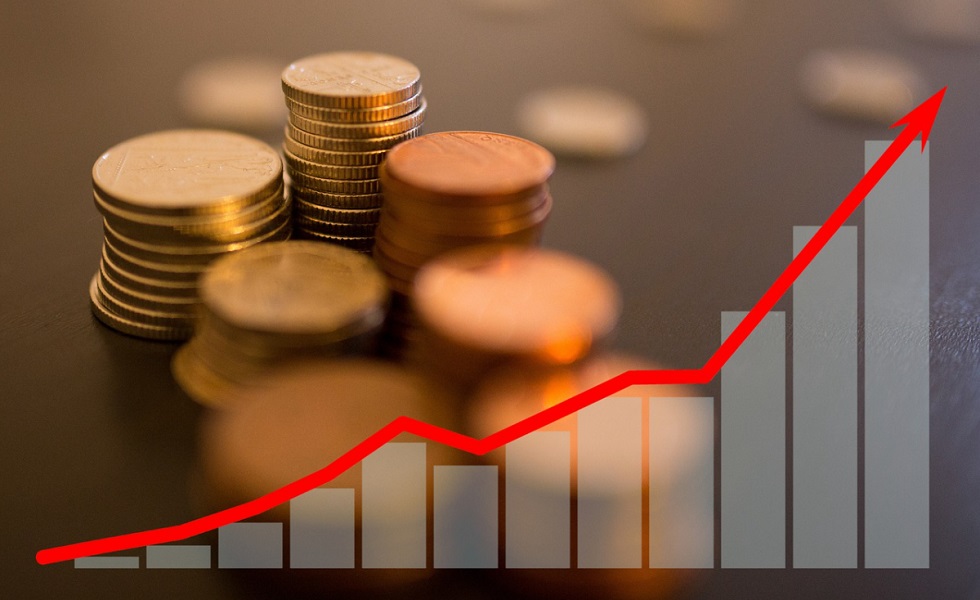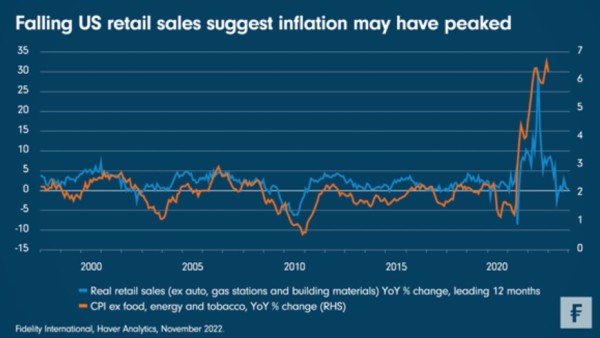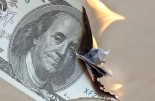Fidelity: Falling US retail sales suggest inflation may have peaked

Real retail sales, a proxy for overall economic demand, have fallen significantly since 2021. Historically, core inflation tends to follow moves in retail sales, suggesting inflation could be due to ease soon - and has almost certainly peaked.
Where retail sales lead, consumer prices tend to follow. And by that logic, this week’s Chart Room offers one argument that we may have already seen the peak of US inflation.
The chart shows real retail sales values deflated by core consumer price inflation (this measure of core CPI excludes food, energy, and tobacco prices) and pushed forward 12 months to more clearly highlight how this proxy of aggregate economic demand tends to lead price changes.

On this basis, the slowdown in real retail sales since 2021 suggests that core CPI could fall from 6.3 per cent in October (the most recent release) to around 2 per cent by the end of 2023, should the normal lead/lag relationship hold. While we take this literal read across with a pinch of salt, the direction of travel over the short to medium term is clear. Over the longer term, we expect inflation to settle at close to 3 per cent, notably exceeding the Fed’s 2 per cent target level, driven higher by structural factors such as decarbonisation, deglobalisation, and debt.
This is one of several indicators suggesting that inflation in the US has peaked. Other such measures include the price components in surveys like purchasing managers’ indices (PMIs), as well as measures of supply chain stress, like shipping rates from China to the US. All of these indicators now show substantial movement in inflation back to pre-Covid levels. Among the many investment implications, this would certainly be good news for fixed income, and is part of the reason why we think bonds may finally look attractive once again.
Nonetheless, the point at which the US Federal Reserve starts cutting interest rates (the so-called pivot) may yet be some time away. For now, all signs point to a much more nuanced phase of the cycle, with inflation easing but still high. How quickly it recedes will determine when the Fed changes course. For a clue to the timing, keep a close eye on US retail sales.






